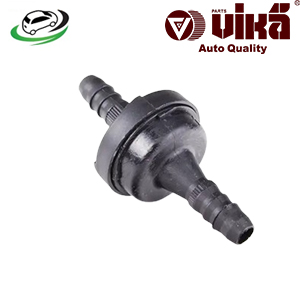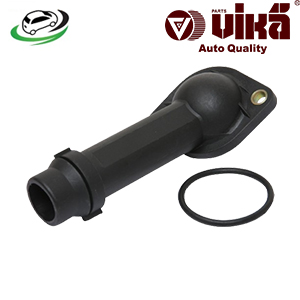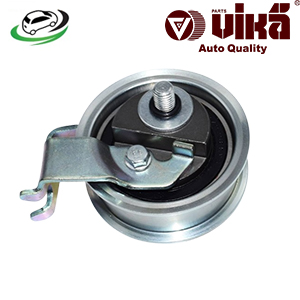-5%
Get Timing Belt Tensioner Roller Audi A3 8P/ B5 A4/ B7 A4/ TT MKI / VW 337/20AE/ EOS/ Golf IV/ Golf R/ Golf V/ Jetta IV GLI/ Passat B5 06B109243D
The timing belt tensioner roller is a critical component in an engine’s timing system, ensuring that the timing belt maintains the correct tension for optimal engine performance. Proper tension in the timing belt is essential for synchronizing the rotation of the crankshaft and camshaft(s), which controls the opening and closing of the engine’s valves. A malfunctioning tensioner roller can lead to timing issues, engine performance problems, and potential damage. Understanding its design, functionality, importance, and maintenance can help in maintaining engine reliability and performance.
1. Design and Structure
The timing belt tensioner roller is designed to maintain the correct tension in the timing belt, ensuring that it operates smoothly and efficiently. The main components of the tensioner roller include:
- Roller or Pulley: The roller, typically made of high-strength materials like aluminum or steel, provides a surface for the timing belt to ride on. It is often covered with a durable, friction-resistant material such as polyurethane.
- Tensioner Mechanism: The tensioner mechanism consists of a spring-loaded or hydraulic system that applies pressure to the roller, adjusting its position to maintain the proper tension on the timing belt.
- Mounting Bracket: The roller is mounted on a bracket or housing that attaches to the engine block or timing cover. The bracket holds the roller in place and allows for adjustments or replacement.
- Adjustment Mechanism: Depending on the design, the tensioner may have an adjustment mechanism that allows for fine-tuning of the belt tension. This mechanism can be manual or automatic.
- Bearing: The roller typically includes a bearing that supports its rotation. The bearing is designed to withstand high speeds and loads, ensuring smooth operation of the timing belt.
2. Functionality
The primary role of the timing belt tensioner roller is to maintain the correct tension in the timing belt. Here’s how it functions:
- Maintains Belt Tension: The timing belt tensioner roller applies pressure to the timing belt, keeping it taut. Proper tension is crucial for the timing belt to effectively synchronize the rotation of the crankshaft and camshaft(s), ensuring that the engine’s valves open and close at the right times.
- Compensates for Stretching: Over time, the timing belt can stretch due to wear and tear. The tensioner roller compensates for this stretching by adjusting the tension in the belt, ensuring that it remains within the optimal range.
- Reduces Vibration: By maintaining consistent tension, the tensioner roller helps reduce vibrations and noise that can occur if the timing belt becomes loose or misaligned.
- Ensures Proper Timing: Accurate timing is critical for engine performance and efficiency. The tensioner roller helps ensure that the timing belt remains properly aligned and maintains the correct tension, which is essential for proper engine timing.
3. Importance in Engine Operation
The timing belt tensioner roller is crucial for several reasons:
- Ensures Engine Timing: Proper timing is essential for the engine’s performance and efficiency. The tensioner roller helps maintain the correct timing by ensuring that the timing belt remains taut and properly aligned.
- Prevents Timing Belt Slippage: If the timing belt is not properly tensioned, it can slip or jump teeth, causing the engine’s valves to open or close at the wrong times. This can lead to poor performance, increased emissions, and potential engine damage.
- Reduces Wear and Tear: By maintaining the correct tension, the tensioner roller reduces the wear and tear on the timing belt and the engine’s timing components. This extends the lifespan of both the timing belt and the engine.
- Prevents Engine Damage: A malfunctioning tensioner roller can lead to timing belt failure, which can cause severe engine damage, including bent valves, damaged pistons, and even engine failure.
4. Types of Timing Belt Tensioner Rollers
There are several types of timing belt tensioner rollers, each designed for specific applications and engine designs:
- Mechanical Tensioner Rollers: These rollers use a spring-loaded mechanism to maintain tension. The spring exerts constant pressure on the roller, adjusting for belt stretch and ensuring consistent tension.
- Hydraulic Tensioner Rollers: Hydraulic tensioners use engine oil pressure to maintain belt tension. The hydraulic mechanism provides precise and automatic tension adjustment, which is ideal for engines with variable load conditions.
- Manual Tensioner Rollers: Manual tensioners allow for manual adjustment of the tensioner roller. They are often used in engines with specific timing belt tension requirements that need to be set by the mechanic.
- Self-Adjusting Tensioner Rollers: Some modern engines use self-adjusting tensioner rollers that automatically adjust the belt tension as needed. These tensioners typically use a combination of mechanical and hydraulic mechanisms for precise control.
5. Common Issues and Maintenance
While timing belt tensioner rollers are generally durable, they can encounter issues that affect their performance. Common problems include:
- Worn Bearings: The bearings inside the tensioner roller can wear out over time, leading to noise, vibration, or failure. Worn bearings can cause the timing belt to become loose or misaligned.
- Spring Failure: In mechanical tensioners, the spring can weaken or break, leading to incorrect belt tension and potential timing issues.
- Hydraulic Leaks: In hydraulic tensioners, leaks in the hydraulic system can cause a loss of tension, leading to timing belt problems and engine performance issues.
- Misalignment: If the tensioner roller becomes misaligned, it can cause the timing belt to wear unevenly or slip. Proper alignment is crucial for optimal performance.
Maintenance Tips:
- Regular Inspection: Periodically inspect the timing belt tensioner roller for signs of wear, damage, or misalignment. Check for unusual noises, vibrations, or leaks that could indicate a problem.
- Replace When Necessary: Timing belt tensioner rollers should be replaced according to the manufacturer’s recommendations, or sooner if they show signs of malfunction. Replacement intervals can vary depending on the engine and timing belt system.
- Check Alignment: Ensure that the tensioner roller is properly aligned with the timing belt. Misalignment can cause premature wear and reduce the effectiveness of the tensioner.
- Maintain the Timing Belt: Regularly inspect and replace the timing belt according to the manufacturer’s recommendations. A well-maintained timing belt reduces the strain on the tensioner roller and extends its lifespan.
6. Replacement and Installation
Replacing a timing belt tensioner roller requires careful attention to ensure proper installation and function:
- Locate the Tensioner Roller: Find the timing belt tensioner roller in the engine compartment. It is usually located near the timing belt and may be accessed through the timing cover.
- Remove the Old Tensioner Roller: To replace the tensioner roller, you may need to remove the timing belt or other components that obstruct access. Use the appropriate tools to remove the old roller and any associated hardware.
- Install the New Tensioner Roller: Position the new tensioner roller in place and secure it according to the manufacturer’s specifications. Ensure that it is properly aligned and that any adjustment mechanisms are set correctly.
- Reinstall the Timing Belt: If the timing belt was removed, reinstall it according to the manufacturer’s instructions. Ensure that the belt is properly tensioned and aligned with the timing marks.
- Check for Proper Operation: After installation, start the engine and check for proper operation of the timing belt and tensioner roller. Listen for any unusual noises or vibrations and ensure that the timing belt remains properly tensioned.
7. Performance and Aftermarket Options
For those seeking enhanced performance or specific features, there are aftermarket timing belt tensioner rollers available:
- High-Performance Tensioners: Aftermarket high-performance tensioners offer improved durability and precision, suitable for high-performance or racing applications.
- Durable Materials: Some aftermarket tensioners use advanced materials for better resistance to heat, pressure, and wear, extending the tensioner’s lifespan.
- Adjustable Tensioners: Adjustable tensioners allow for fine-tuning of the belt tension, which can be beneficial in applications requiring precise control.
Follow us on Facebook for more parts.



